We may receive a commission when you use our affiliate links. However, this does not impact our recommendations.
A well-kept treasure lies dormant under a few rivers, ponds, and lakes in eastern Europe and Siberia, and awaits redemption. Bogwood is that treasure and Allen Telt is one of its chief redeemers. I met Allen a few months ago in New Jersey to hear about his enterprise and see some fascinating pieces of furniture that were made from bog oak in the shop of Thomas Newman and Vladimir Krasnogorov.
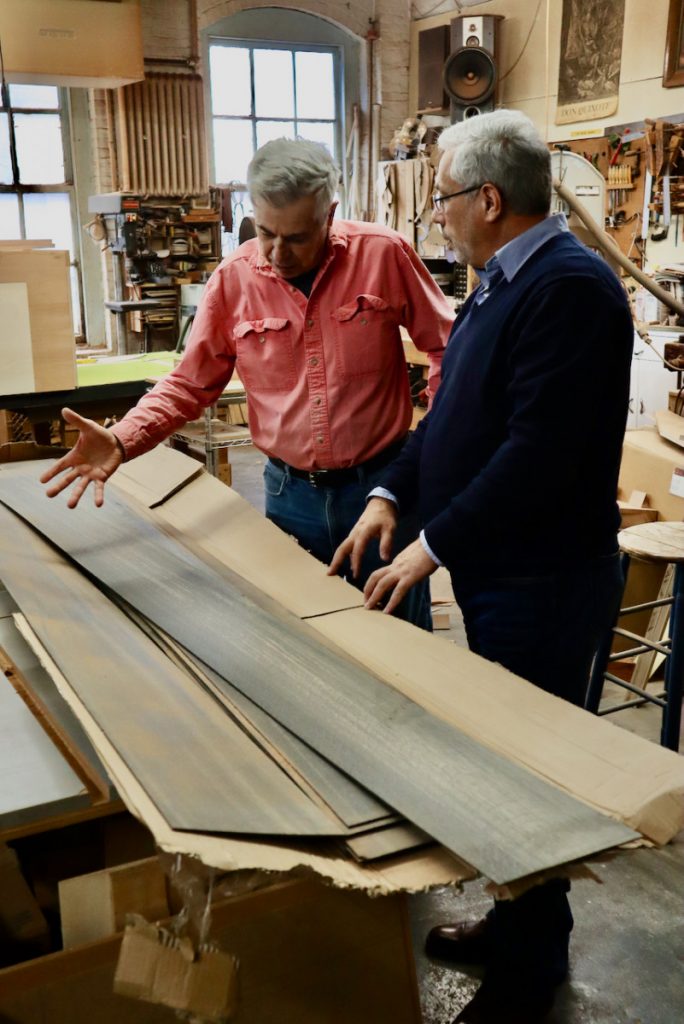
Allen Telt and Thomas Newman inspecting a shipment of thick Bog Oak veneer that just arrived in the USA. Allen located a specialized veneer mill in Italy that became his exclusive go-to source for resawing bog oak logs into exquisite veneers.
Bog oak (but also other bog species such as bog larch and bog cedar) is the colloquial name given to mostly white oak trees that fell, ended up underwater, and were covered by sediment for millennia. During the time that these logs laid submerged, shielded from light and oxygen, they became subject to a slow and profound transformative process that changed their color and physical properties and eventually resulted in proto-petrification.

A log in the bog.
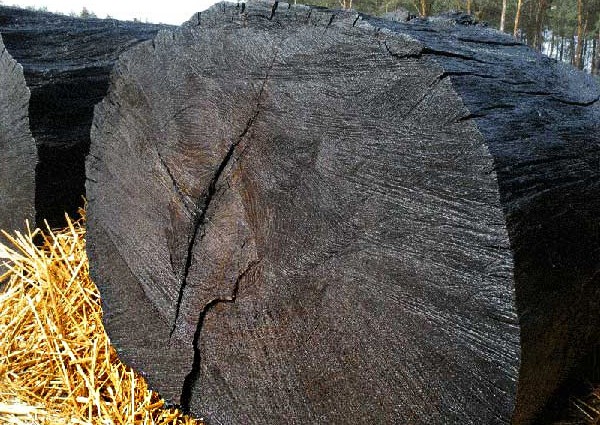
A log out of the bog basking in the sun after two thousand years submersion.
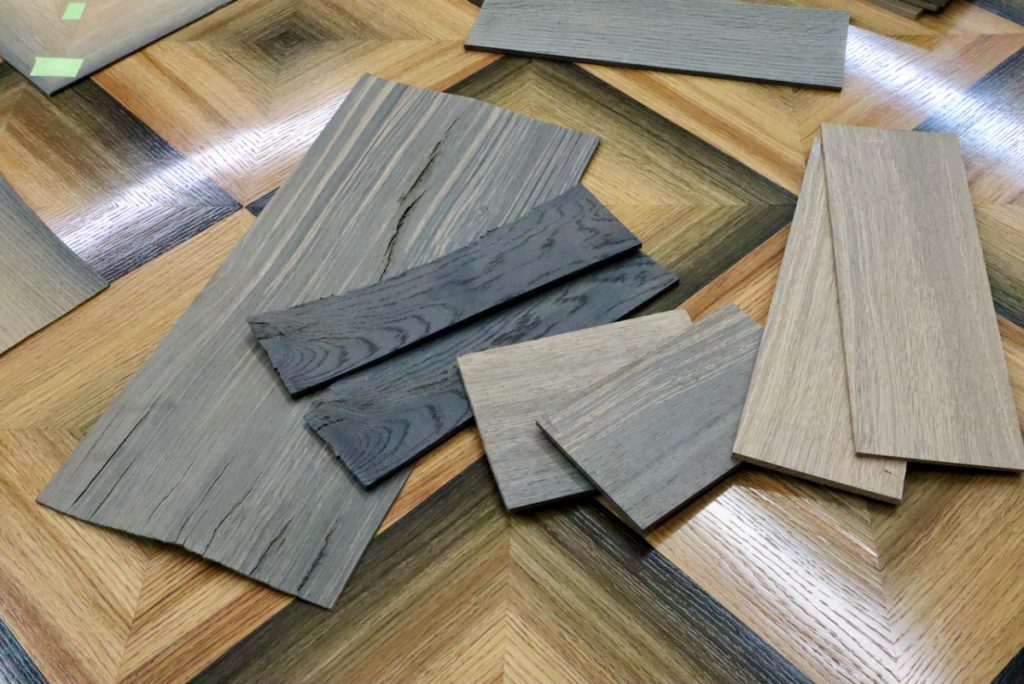
Bog oak pieces and bog oak thick veneer samples over a finished bog oak marquetry tabletop.
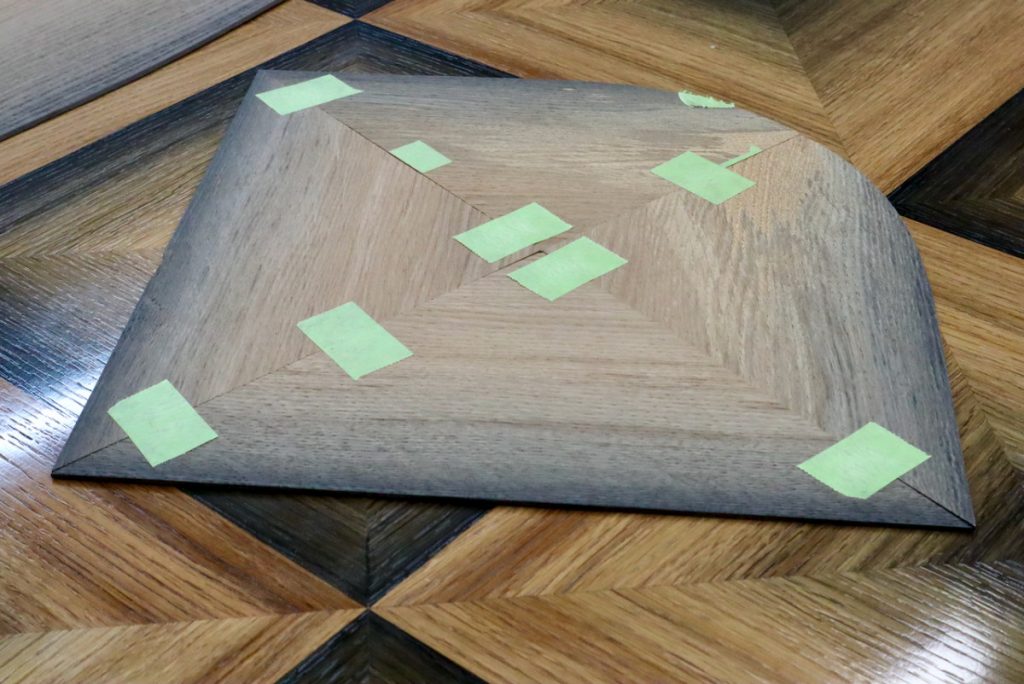
Notice how thick the veneer triangles are.
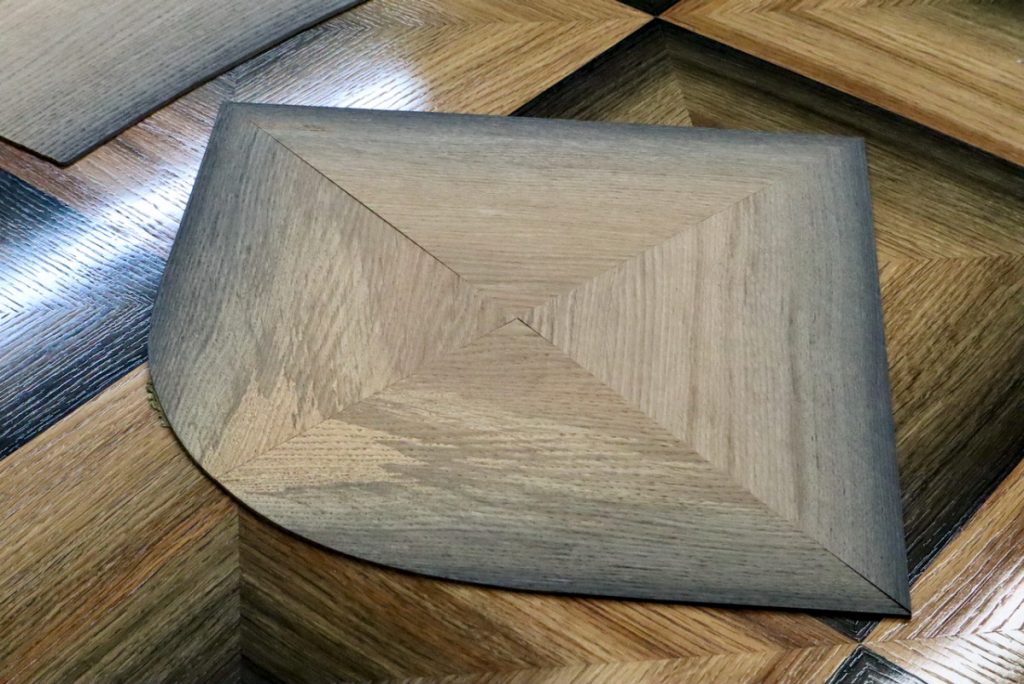
Bog oak wood darkens in proximity to the trank’s exterior. As time passes by the darkening effects migrate into the interior of the log. Some bog oak woods are strikingly blackened through and trough and resemble ebony or wenge.
Once the logs are hoisted up, sawn into planks, and carefully (and very slowly) dried, this wood reveals exceptional color graduation – the result of the trunk’s long term interaction with acidic waters, minerals, chemicals, metals, and organic mater that percolated and saturated the timber throughout the centuries. The black to dark-brown, to rich yellow shading (and all the hues in between) are the hallmarks of bog oak wood. These esthetic attributes coupled with the exceptional ability to resist decay make bog oak very coveted by designers and cabinetmakers. The bog oak spectrum of color is achieved naturally and can vary from log to log. Some bog oak planks can look like ebony or wenge through and through, while others show a transitional coloration — from black on the periphery (the sapwood) to yellow in the interior.
This fascinating video depicts one of Allen Telt’s recent bog oak recovery expeditions in Siberia, Russia.
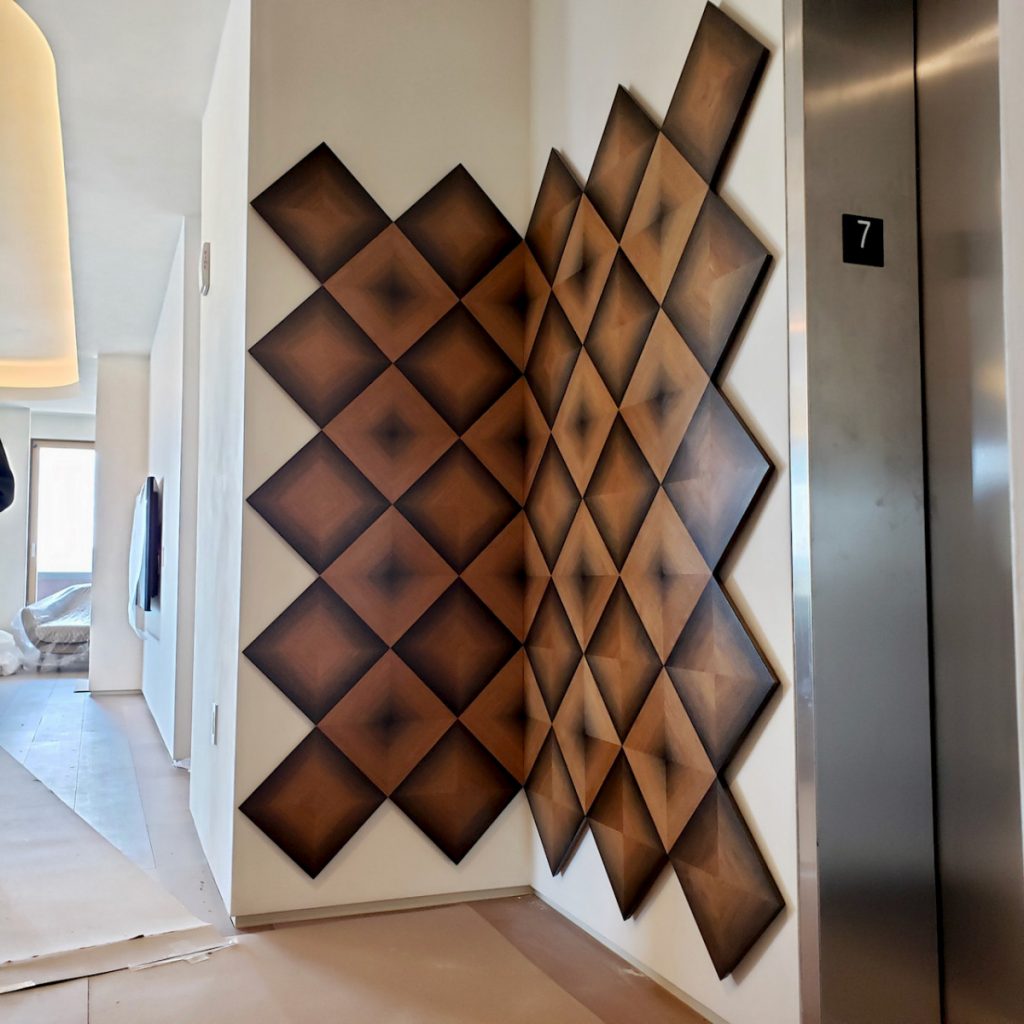
Bog oak marquetry wall art. Designed and made by Thomas Newman and Vladimir Krasnogorov.
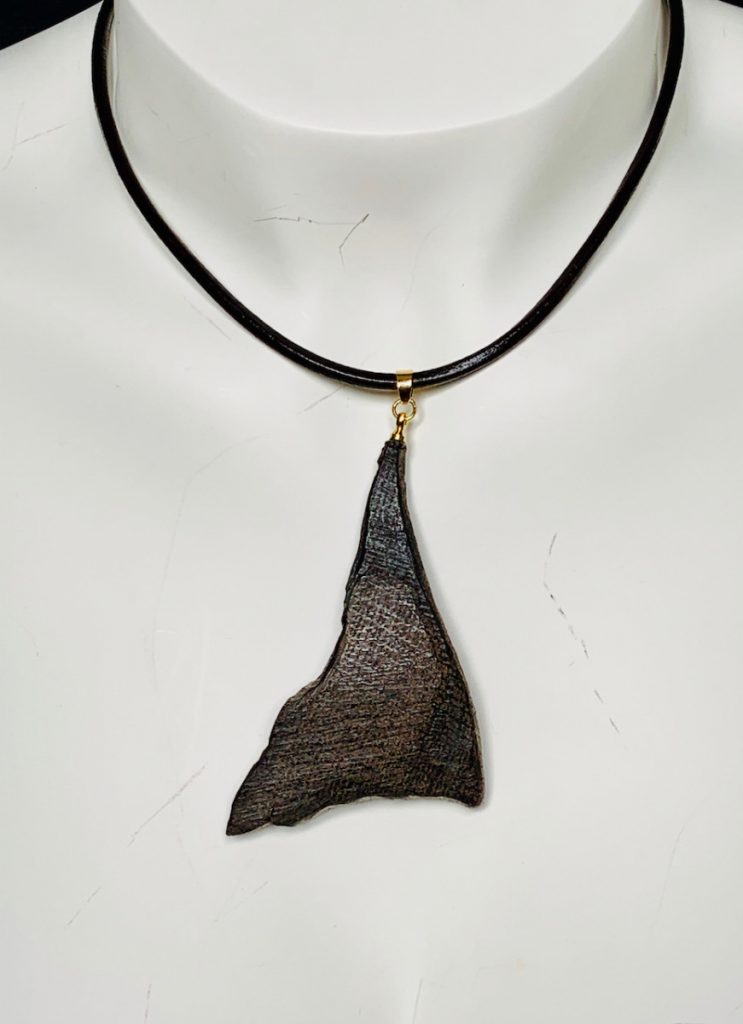
Modern Bog oak jewelry, by artist Larisa Dukhovenko that showcases pieces of wood which date back thousands of years. While the catalyst for our modern-day recognition of bog oak comes from Irish and British woodworking traditions and makers, the history and presence of bog oak span further than this and can be located in central and eastern Europe too.
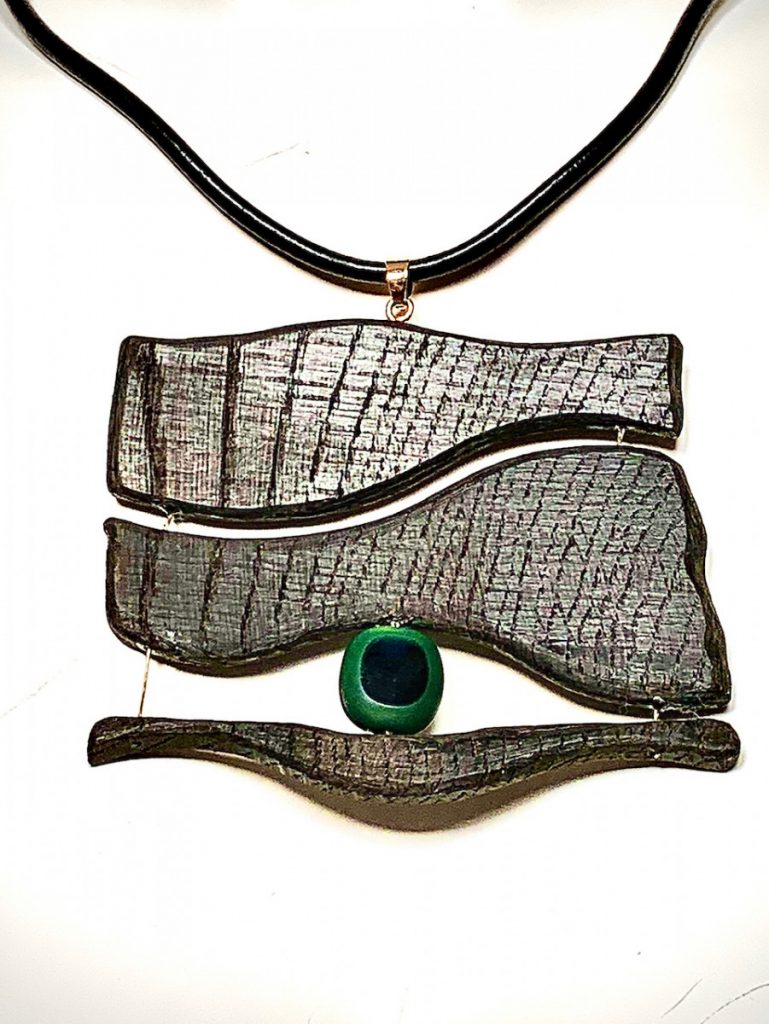
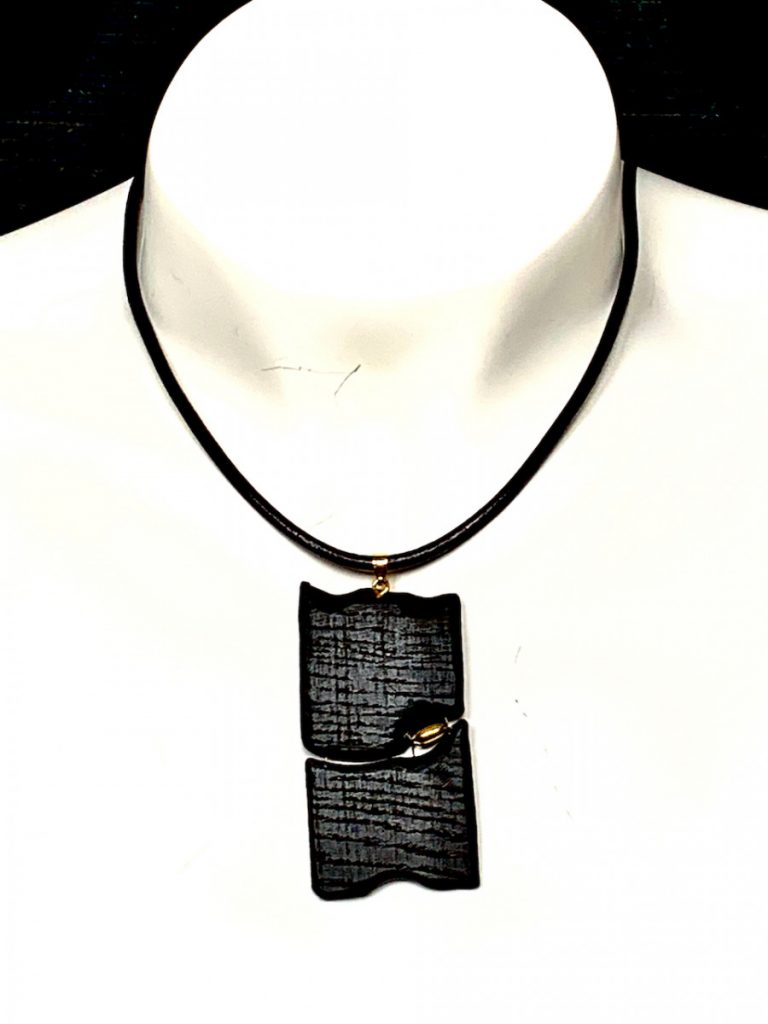
Bog oak also resonates with a sublime appeal as a result of three other attributes. First, it has always been rare and expensive to mine, dry and process. Secondly, it is one of the only kind of timber that is fire resistant (thanks to its high mineral content, around 12%). And thirdly, throughout history, bog oak has been viewed as mystical wood that contains metaphysical properties, including the ability to heal the sick. The wood’s hardness, longevity, and resiliency transcends into symbolism and mythology to the point that kings and queens sought it out to build their thrones and decorate their palaces. Thus its presence was evident in the courts of Louis XIV, Peter the Great, Mary Queen of Scots, and some Venetian palaces.
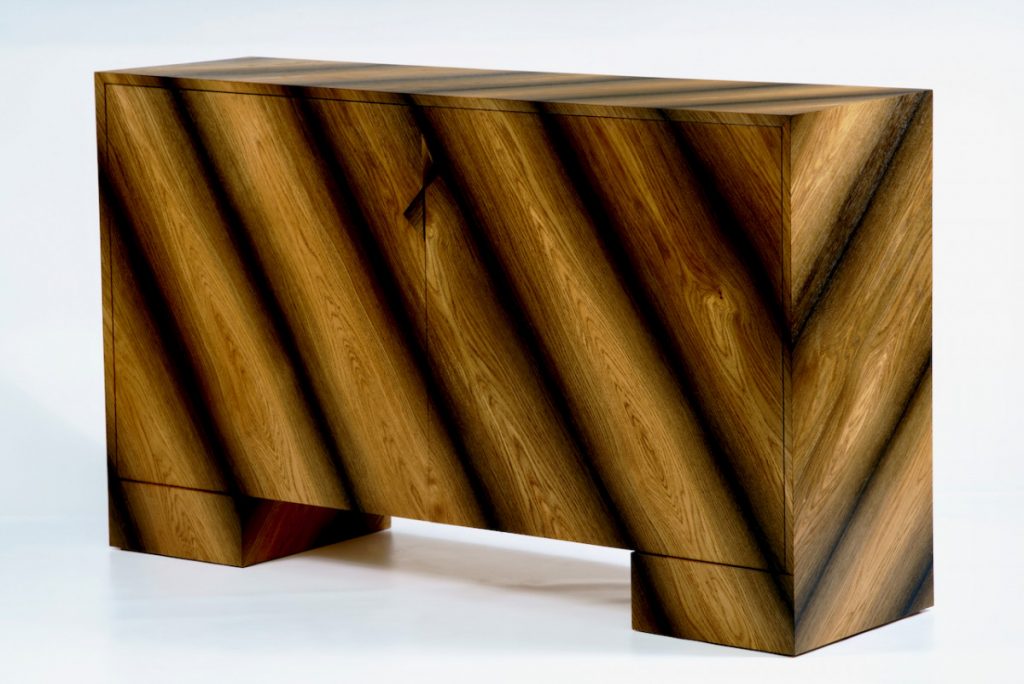
A console made with bog oak veneer, designed and made by Thomas Newman and Vladimir Krasnogorov.
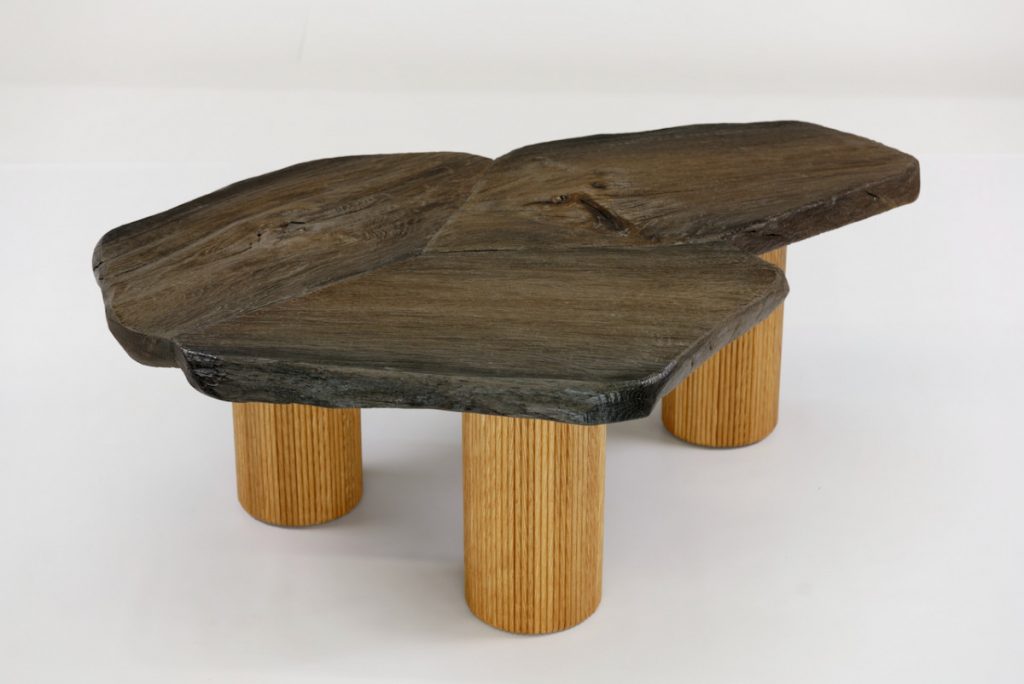
A coffee table whose top is comprised of three solid bog oak live edge slabs. Designed and made by Thomas Newman and Vladimir Krasnogorov.
Allen Telt began developing his bog oak excavation and recovery business eight years ago. After seeing artifacts made from Irish bogwood and hearing about the unique origin of the wood, he got hooked. When he heard rumors that bogwood (and especially bog oak) is laying under swamps and waterways in Ukraine, Russia, and a few other eastern European countries, he decided to act. Believing in the destiny and the transformative potential of this semi-fossilized treasure, he amassed resources and time and set forth to bring it out of the depths and back into the sunlight. As a diver, who was born and raised in Crimea, he decided to commence searching for bog oak first in Ukraine. He learned about a sunken 17th-century Turkish ship that carried trunks, and he purchased the rights to the valuable cargo. Then he launched his own search expeditions and developed a system for controlled sawing and drying process of the trunks into planks to ensure maximum preservation of the wood. Allen is an ultimate reclaimer and is part of a group of individuals who feel that abandoned, neglected, or forgotten wood, and especially timber that posses such a remarkable appearance and provenance, should not be forsaken. He believes that this legacy wood, which in many cases is thousands of years old, deserves a second chance and should be valiantly incorporated into new works of art and design.
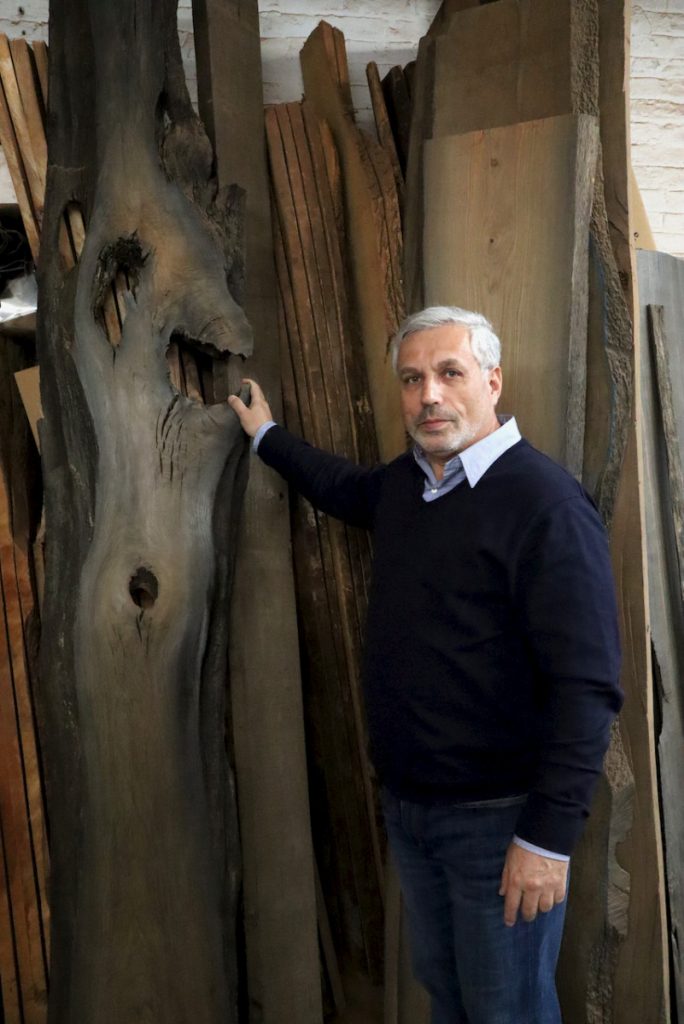
Allen Telt and some beautiful slabs of Bog oak. Allen routinely sends bog oak trunk samples to a certified lab for carbon dating. Some of the logs that he recovered are thousands of years old and came from trees that saw ancient empires rise and fall, witnessed the dawn of Christianity, and the armies of Genghis Khan.
In the relatively short time, he’s managed to become one of the main actors of this field, from leading expeditions that located, recovered, and processed bog trunks, to initiating efforts of introducing makers, designers, and clients to bog oak and its potential. Allen’s enthusiasm for the noble bog oak led him to develop a partnership with Thomas Newman and Vladimir Krasnogorov, two very talented and highly accomplished designer-makers who gladly utilized and celebrated bog oak in a novel and original way in their projects.
Watch Thomas Newman as he shares his experience with bog oak:
In my next post, I will talk in detail about Thomas and Vlad’s work.
Here are some supplies and tools we find essential in our everyday work around the shop. We may receive a commission from sales referred by our links; however, we have carefully selected these products for their usefulness and quality.








